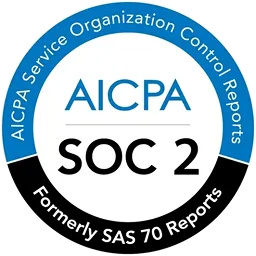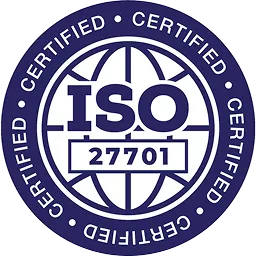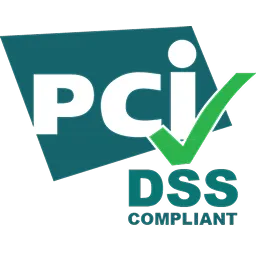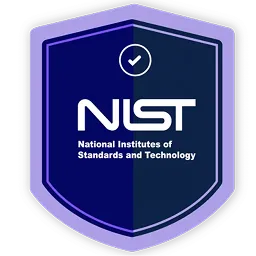In IT support, an employee ticket is pivotal for efficiently managing and resolving issues. Consider it a digital request initiated by an employee seeking help with an IT-related concern, like a software access request. The IT ticketing system enables efficient management of all these tickets, providing details about the issue's nature, urgency, and context.
IT ticketing systems have become an integral part of organizational support structures. According to HDI, a staggering 83% of organizations rely on formal IT ticketing systems to manage their support requests efficiently. These systems are crucial in streamlining the process of managing and tracking service requests, contributing significantly to organizational productivity.
In this blog, we will cover various aspects of IT ticketing systems, including their advantages, key components, and implementation strategies.
What are IT Ticketing Systems?
An IT ticketing system is a central tool for efficiently managing and addressing IT-related requests. It bridges employees and IT support teams, organizing and prioritizing tasks while automating routine processes. This ensures that support teams can focus on critical issues and maintain a documented record of conversations for context.
Beyond IT, organizations can utilize this system to manage tickets across various departments. Whether hosted on-premise or in the cloud, it goes by names like IT help desk ticketing system or support ticket system, enhancing overall IT operations management and accountability.
What Makes IT Ticketing Systems So Critical Today?
Today, IT ticketing systems have become indispensable tools for efficient IT operations and seamless employee support. These systems play a critical role in simplifying the process of monitoring and categorizing user requests, enabling IT teams to work effectively and manage their workload efficiently.
- Centralized Request Management
One of the primary advantages of IT ticketing systems is their ability to centralize user requests, providing IT professionals with a streamlined platform to address issues promptly. This ensures quick support for users and timely resolution of critical concerns, ultimately optimizing IT operations and enhancing overall productivity.
- Streamlined Collaboration & Communication
Moreover, IT ticketing platforms serve as centralized communication hubs for both end users and IT personnel. This centralized approach ensures that everyone involved has access to up-to-date information regarding the status of requests, fostering better communication and collaboration across teams.
- Data-Driven Decision Making
These systems also offer valuable insights into IT team performance, including metrics such as response times, resolution rates, and client satisfaction levels. Leveraging this data enables data-driven decision-making, allowing IT managers to identify areas for improvement and implement strategies to enhance service quality.
- AI-Powered Automation
Modern ITSM ticketing tools equipped with AI capabilities empower users to submit requests easily and track their progress autonomously. This reduces the need for follow-up emails or calls, improving communication efficiency between IT teams and end users.
- Comprehensive Analysis
These systems provide thorough analyses of request trends, performance metrics, and operational patterns for better visibility and decision-making. Thus, they help IT managers comprehend trends better, improve operations, and make informed decisions to optimize service delivery.
- Secure Framework
IT ticketing system offers a controlled and auditable framework for managing requests and incidents, ensuring the security and integrity of the IT infrastructure. Hence, it enhances organizational productivity and service quality while maintaining compliance with regulatory standards.
Overall, IT ticketing systems streamline request management and maintain a secure and auditable framework for IT infrastructure management, enhancing organizational productivity and service quality.
Key Components Of An IT Ticketing System
A standard ticketing system comprises essential components that efficiently streamline the management and resolution of IT issues.
- Centralized Ticket Repository
A centralized repository serves as the backbone of an IT ticketing system. It functions as a single location where all incoming requests, issues, and incidents are stored and managed. This centralization ensures that no request goes unnoticed and enables efficient tracking of tickets throughout their lifecycle. Additionally, it facilitates easy access to data for analysis and reference purposes, enhancing overall system functionality.
- IT Ticket Creation Process
The IT ticket creation process involves the generation of digital records, known as tickets, that contain essential information about reported problems or requests for assistance. Each ticket is assigned a unique identifier and categorized with tags to streamline tracking and referencing. Employees can submit tickets through various channels such as chatbots, email integration, or web forms, ensuring flexibility and accessibility in reporting issues.
- Communication Tracking Among Employees
Effective communication plays a vital role in resolving IT issues promptly. A robust ticketing system includes features for tracking communication between employees, such as threaded discussions, email notifications, and integrated chat functions. These features enable efficient collaboration between IT teams and users, ensuring everyone stays informed about ticket status and progress.
- Employee Access to Request Status
Transparency and visibility are essential aspects of an efficient ticketing system. Providing employees and stakeholders with visibility into the requests’s status fosters trust and accountability. Self-service portals and automated notifications are tools that enhance visibility, allowing users to track the lifecycle of their tickets and reducing the need for follow-up inquiries.
- Data Analytics and Reporting Tools
Data-driven insights are crucial for informed decision-making within an organization. A comprehensive IT ticketing system includes robust data analytics and reporting capabilities. These tools enable IT managers to track performance metrics, analyze trends, and visualize data related to ticket volumes, resolution times, employee satisfaction scores, and more. Access to such insights empowers organizations to make data-driven improvements and optimizations.
Now that you know the key components, let's explore some strategies for implementing an IT ticketing system.
Key Strategies To Implement An Ideal IT Ticketing System
An ideal IT ticketing system streamlines ticket tracking and enhances collaboration among IT teams and stakeholders. Let's explore the key strategies for implementing the one that aligns with your organization's needs and goals.
1: Clarify Your Objectives
One key strategy for implementing an ideal IT ticketing system is to clarify your objectives. This involves understanding the purpose behind adopting the ticketing system and setting clear, achievable goals. The primary objective for most businesses is to provide reliable support to employees. However, more specific goals can also be considered, such as resolving requests at the first contact or reducing response time for support representatives.
Once these goals are defined, it's essential to create a plan of action to achieve them and ensure that all relevant team members are aware of and aligned with these objectives. Documenting and sharing these goals can help maintain focus and collaboration throughout the implementation process.
2: Identify User Expectations & Challenges
Another crucial strategy for implementing an ideal IT ticketing system is identifying user expectations and challenges. This involves delving deep into the pain points and expectations of end-users, whether they are employees. Understanding these aspects is essential for providing a satisfactory experience and effectively meeting user needs.
For instance, if employees anticipate a resolution within a specific timeframe, failing to meet this expectation could result in a negative experience. By asking questions like whether they are comfortable with wait times for issue escalation or if they prefer self-service options, you can gain insights into their preferences and improve your support processes accordingly.
Continuously gathering feedback and addressing common concerns helps alleviate user pain points and enhance the overall employee experience. This approach ensures that your IT ticketing system is aligned with user expectations, leading to higher satisfaction and engagement levels.
3: Train and Integrate Your Support Team
Another critical strategy for implementing an ideal IT ticketing system is to effectively train and integrate your support team. This involves addressing questions such as the optimal size of your IT support team based on your user base and typical request volume. Once you've determined your needs, it's crucial to ensure your support team is well-versed in using the IT ticketing software.
At this pivotal point, it's crucial to communicate the goals delineated in your service catalog with your team. Next, allocate resources such as budget and time for comprehensive training sessions. Regular training not only fosters the development of essential skills and knowledge among team members but also bolsters their confidence in handling IT tickets efficiently.
By investing in the training and integration of your support team, you will improve service delivery, which will ultimately contribute to a higher level of user satisfaction. A well-trained and integrated support team is key to achieving a positive user experience and building an efficient user base.
4: Establish Automated Ticketing Workflow Guidelines
Establishing automated workflow guidelines within your IT ticketing system is crucial for enhancing the efficiency of handling employee tickets. This involves creating predefined rules that automate manual tasks, ultimately saving valuable time.
One essential aspect is automated ticket assignment, where features like Round Robin assignment can automatically distribute employee tickets to available admins. Alternatively, tickets can be assigned based on agents' expertise, ensuring the most suitable person handles them.
Implementing time rules is also beneficial, as they automate actions after specific time intervals. For example, setting a time rule can trigger a feedback email to employees immediately after resolving their issue, ensuring timely communication.
Furthermore, service level agreements (SLAs) are vital in defining service levels promised to employees. Establishing SLA rules ensures that agents adhere to requirements, such as responding to employee issues within a specified timeframe. Automated reminders within the ticketing system can help admins stay on track with SLA commitments.
5: Monitor Relevant Key Performance Indicators (KPIs)
To optimize support for employee tickets, it's crucial to monitor key metrics consistently. Using your IT help desk's reporting tools, you can evaluate how well support reps handle employee issues and pinpoint areas that need enhancement.
Some of the key performance indicators (KPIs) that you should track include:
- Average Response Time: This measures how quickly support reps respond to employee tickets, reflecting the timeliness of your support.
- First Contact Resolution Rate: This KPI tracks the percentage of employee tickets that are resolved during the first interaction with support, indicating the efficiency and effectiveness of your support team.
- Ticket Resolution Time: This metric measures the average time taken to fully resolve employee tickets, including the time from ticket creation to closure. It reflects the efficiency of your support team in resolving issues promptly.
- Ticket Escalation Rate: This KPI tracks the percentage of employee tickets that require escalation to higher-level support or specialized teams. A high escalation rate may indicate gaps in frontline support or the need for additional training.
- Overall User Satisfaction: This metric gauges the satisfaction levels of employees with the support they receive, providing valuable insights into the quality of your support services.
These metrics not only gauge the success of your IT ticketing system but also encourage accountability within the support team. Automating reports on these metrics helps IT & support teams stay informed and ensure a high standard of support for employee tickets.
6: Opt for a User-Friendly Self-Serve Portal
IT admins usually manage access requests manually by granting access, creating accounts, or performing other tasks, which adds complexity. To simplify access request management, consider integrating a user-friendly self-serve portal into your IT ticketing system.
A self-serve portal empowers employees to handle common issues independently, access knowledge-base articles, and submit tickets for routine problems. You can decrease ticket volume, optimize support resource allocation, and improve overall support efficiency by providing self-service options. Look for ticketing systems with robust self-service portal features and customization options tailored to your organization's requirements.
Zluri is one such solution that offers a self-serve model. It specializes in providing automated access requests and approval portals that benefit employees and IT admins. With Zluri, you can establish multi-step approval workflows directly within the platform. The platform notifies managers directly through Slack, simplifying the approval process for access requests. Once approvals are obtained, Zluri auto-provisions access to specified apps, creating an automated and streamlined workflow.
This capability streamlines software access issues, leading to smoother operations and increased employee satisfaction. Zluri also helps organizations eliminate access delays, minimize errors, and ensure compliance with CCPA, SOX, and GDPR.
Enhance IT Operations with The Best Ticketing Systems
In conclusion, selecting the right IT ticketing system is crucial for businesses to streamline their IT processes effectively. We've highlighted key components such as centralized ticket repositories, communication tracking, and robust data analytics. Organizations can enhance efficiency, improve accountability, and ensure prompt resolution of technical issues by choosing an optimal system.
Moreover, the right IT ticketing system offers scalability and flexibility, allowing organizations to adapt to changing business needs and technological advancements seamlessly. It also plays a vital role in improving internal collaboration among IT teams and other departments, fostering a more cohesive and efficient work environment. By investing in the right system, businesses can optimize their IT service management practices, reduce downtime, and ultimately drive growth and success.
Thus, investing in the right IT ticketing system is essential for achieving IT service excellence and overall business success.






.png)


.svg)














